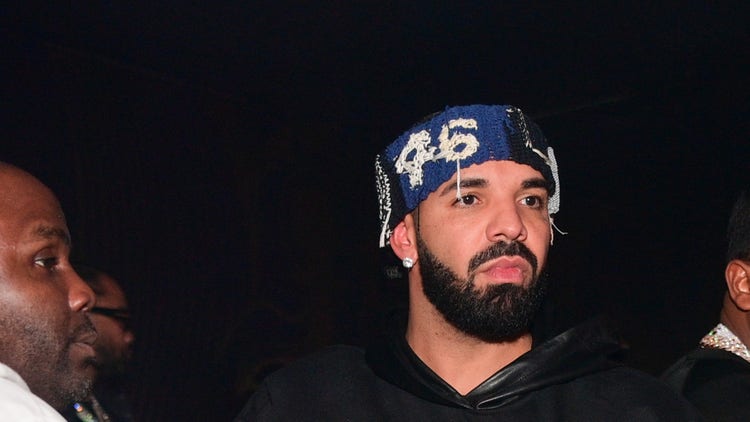As KRS-One articulated throughout his catalog and in his many teachings, “Rap is something you do, hip hop is something you live.” As the culture continues to evolve today, many feel it’s not only important, but vital to preserve and honor the fundamental elements: Graffiti, emceeing, breakdancing, deejaying and knowledge. This column called “Each One, Teach One” aims to do exactly that. It will highlight various lessons that can be passed between new and old generations alike.
The concept that the music a person listens to during their teenage years will resonate for the duration of their life is not necessarily a new idea. It’s simple enough, and isn’t necessarily exclusive to music, either. Regardless, countless studies over the years have focused on such a phenomenon, with one conducted by the New York Times pulling from Spotify streaming data to note how gender and age play a role in shaping a person’s listening tendencies as they eventually grow into adulthood.
The 2018 analysis found that childhood influences have a stronger impact on women than they do for men, as one’s musical preferences setting in — or “peaking” — at age 13 for women and age 14 for men. The study focused on an identifiable pattern that showcased how the age of a fan, when a certain song came out, played an impactful role in ultimately shaping that person’s taste in music. In other words, music that is popular during one’s teenage years often becomes a lifelong love affair, as the majority of people gravitate toward music that soundtrack their high school years or earlier.
When shaping a rudimentary case study around Drake, in particular, it is important to note several pertinent factors that have helped mold his legacy outside of his talent and the divine timing of his ascent; including the average age of his core fanbase, his mastery during the rise of the streaming era and his seemingly effortless adaptability to social media. His career’s dominance for over a decade has yielded him countless accolades such as breaking streaming records, garnering over 500 awards show nominations, amassing a net worth of $150 million, and more. However, one measurement of Drake’s success is his ability to keep his fans engaged and at the center of every move he makes.
Drake’s exceptional adeptness at resonating with his audience means that he doesn’t necessarily need to reinvent himself to stay relevant or make an impact. New York Times pop critic Jon Caramanica stated, “One of Drake’s real gifts is that he doesn’t go away.” The way he transitioned from “Degrassi” to uploading tracks online is something that his fans will always remember. Listening to an old Drake song takes the listener back to the place in their life when they heard it for the first time, and given the Toronto artists impressively consistent run, he’s soundtracked an innumerable amount of coming-of-age moments and milestones.
Drake’s core demographic is comprised of millennials and as an archetypal Gen Y himself, he was able to strategically and organically align with his fans as a voice for his generation. This hasn’t wavered as he’s grown up alongside his supporters, either.
From being inherently in tune with youth culture to understanding trends, and more importantly how to harness their power, Drake has gone on to find success through exploring (and even exhausting at times) an interpersonal narrative. Regardless of which genre influence or direction he’s taking a song in, the inclusion of on-brand vulnerability has long become a staple of his music. His ability to wholeheartedly embrace his emotionally driven persona is his most powerful attribute, poising him as both malleable and unbreakable. He never lets on too much and because of this, the confessional nature of his lyricism is as relatable as it is surface-level.
As exemplified by the recent release of his Care Package compilation, Drake blessing his fans with the gift of nostalgia is a move from his tried-and-true career playbook that will never fail. Recognizing the value of his content, he celebrated his day-ones by giving a nod to those who many of his fans can identify by stating “[the project is] some of our most important moments together available in one place.” It is as much a safe move to get everyone talking about how they miss the rap blog era as it is savvy promotional material both for the return of his OVO music festival, and to ignite whispers of what Drake being in “album mode” again could mean.
It’s not the first time Drake has tapped into the art of nostalgia marketing, nor will it be the last. Earlier this year, he gifted another throwback to his fans by way of putting his 2009 mixtape, [So Far Gone],(https://revolt.tv/stories/2019/02/24/drake-scores-10th-top-10-album-rerelease-0700bf8065) on streaming services for the first time.
Drake withstands criticism by being a low-key, yet omnipresent, mastermind who knows how to repurpose his content and play to strengths that he has identified with. This reiterates the fact that he doesn’t really go away, even when the brightness of the spotlight comes in waves. We’d all like to see a new era of Drake, sure, but settling for the Drake we know and love is cool, too. Longevity in the rap game is something that isn’t promised. But, by pulling on his fans’ heartstrings through nostalgia, Drake doesn’t seem all too worried about where he stands in the industry. When he’s in a creative lull, his marketing prowess prevails. When his knives are sharpened, his momentum to be a legacy artist only furthers his mission. Moreover, his fans will stay engaged every step of the way.
Nostalgia marketing is as effective as it can be inescapable. When it works, it works. Nostalgia, for example, helps us come together and shape conversations around sentimentalism and authenticity, allowing us to skip down memory lane, and Drake provides the soundtrack to that. After all, sweet nostalgia can be hard to resist when you can relate.
More by KC Orcutt:
